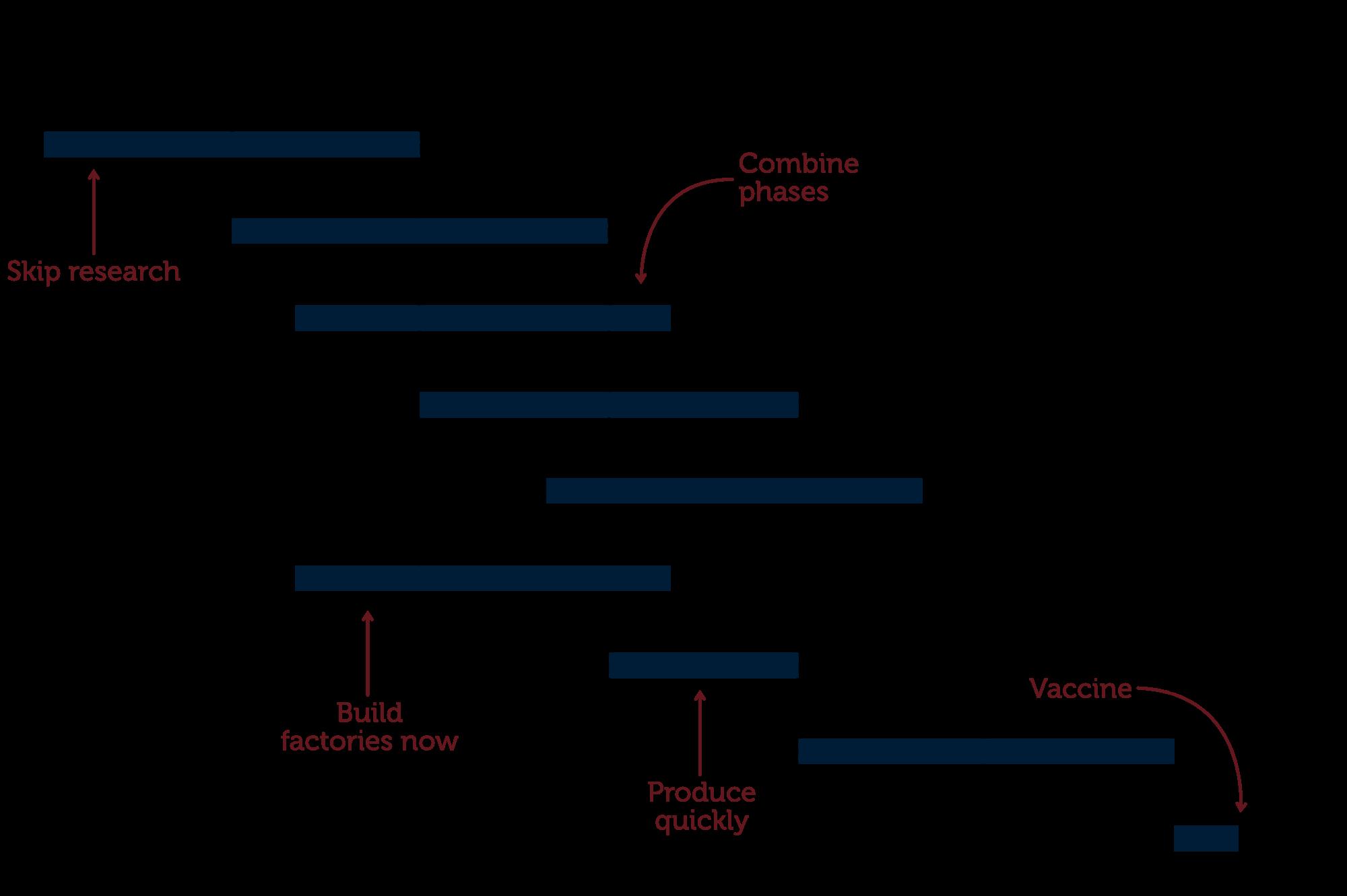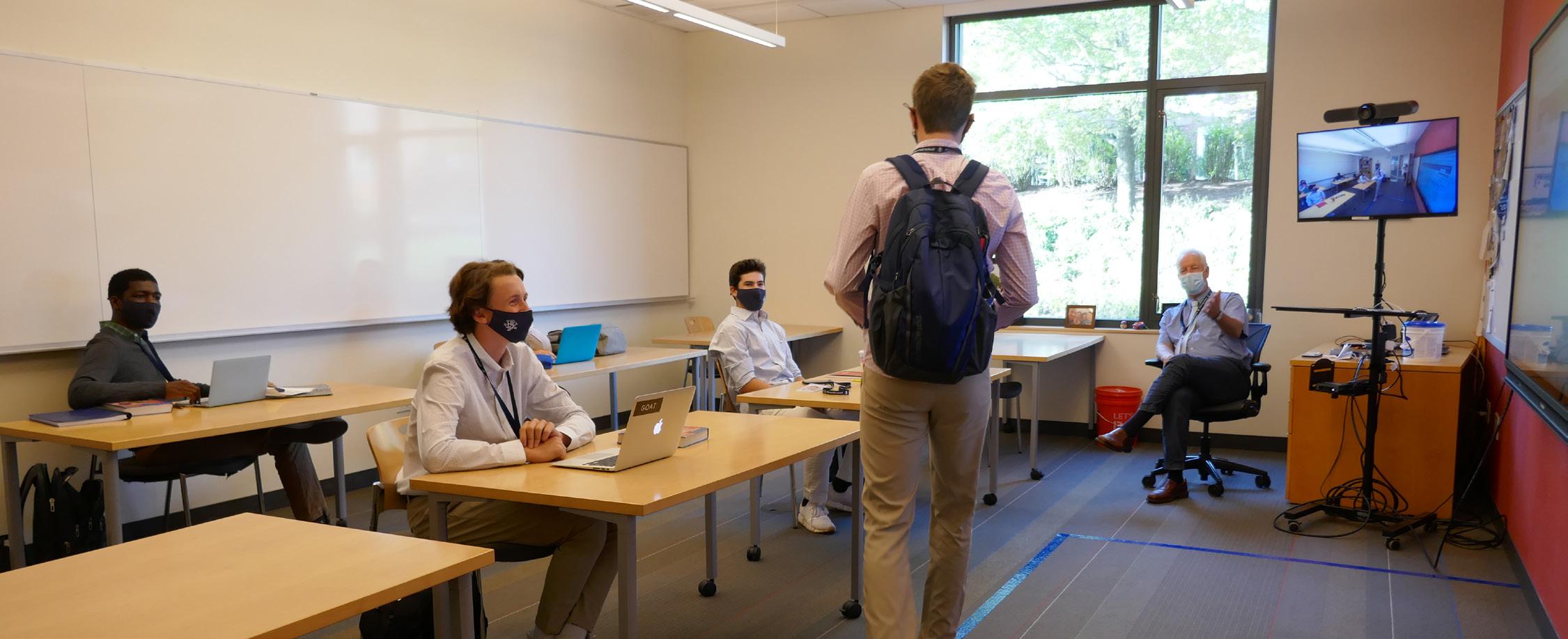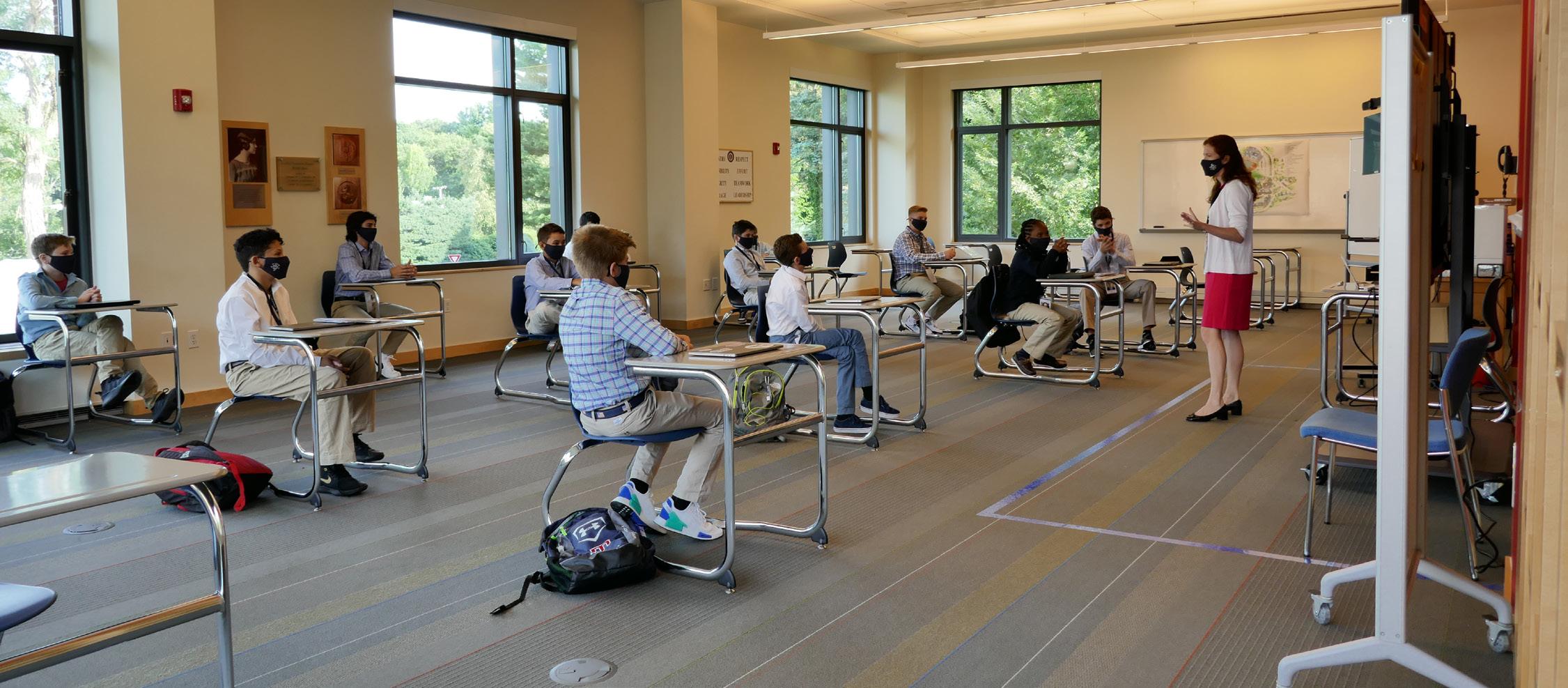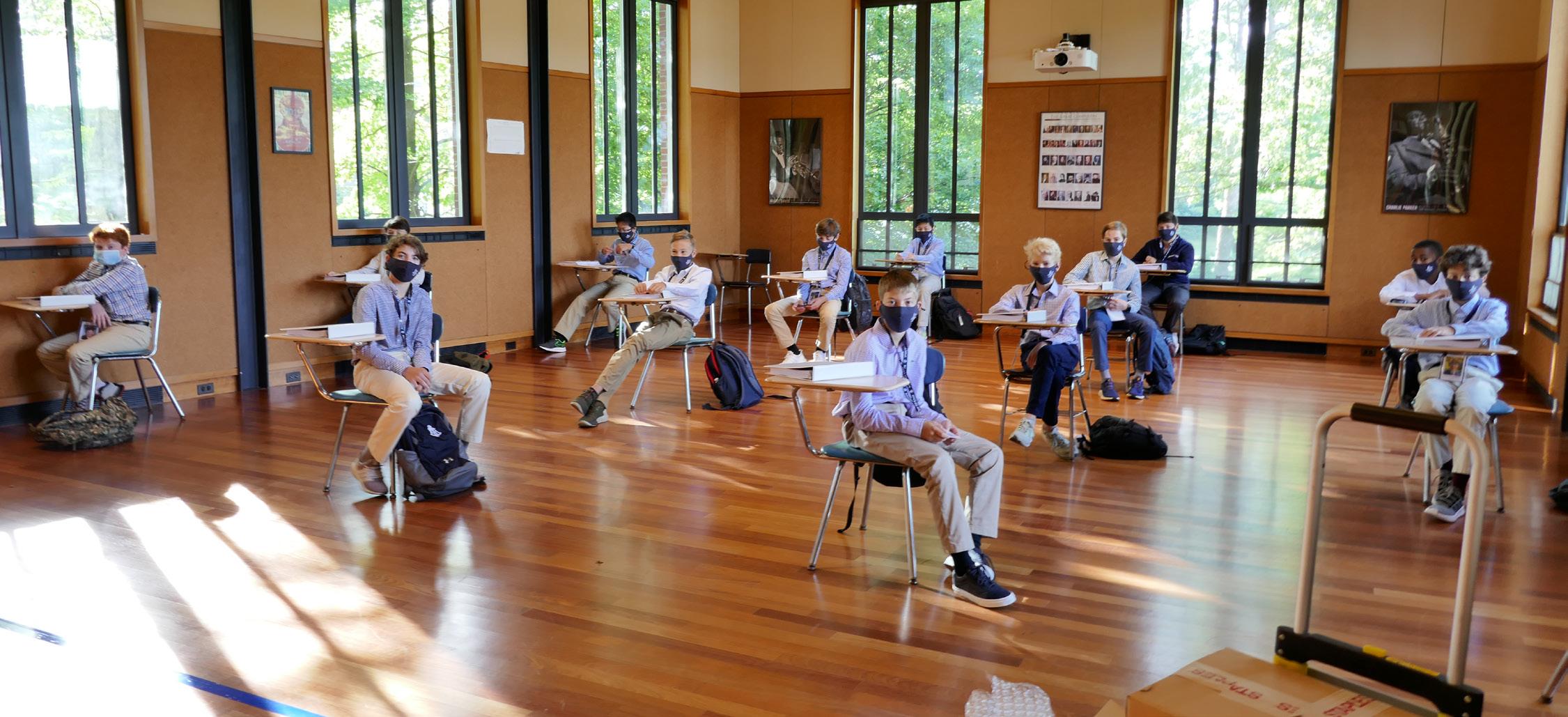
5 minute read
Opinion Pieces
Vaccine: Choice or Force?
Author-Howard Huang ‘22 Section-Opinion Pieces
The COVID-19 Pandemic has hampered learning at Belmont Hill by distancing students from teachers; however, an end is in sight with the development of a functional vaccine for the virus potentially being able to reduce the risk of infection. Depending on the source of information, the vaccine is set to roll out anytime from December of this year to 2022. Operation Warp Speed is an initiative by several government agencies that has the sole goal of providing 300 million doses of a vaccine as soon as possible. More than $10 billion of funding has been provided by Congress, and the operation already is running vaccines through test trials while planning distribution of the doses to Americans. Once a vaccine that can provide immunity to the virus is released, though, should schools require students to get vaccinated in order to attend school in-person? Yes, this is a common sense measure school boards should pass. In the past years, social media has permitted the spread of disinformation in groups that are against vaccinations which has made the scientific consensus on the usefulness of vaccines overridden for some by badly researched conspiracy posts and political opinions. Luckily, these so-called “anti-vaxxers” are a relatively small portion of the population meaning that herd immunity is still in effect; however, if enough students fail to get vaccinated before in-person school starts, Belmont Hill could still suffer an outbreak within its campus. On the other hand, families would have good reason to refuse to send their children into an unrestricted school to get infected with the virus if there is no vaccination requirement. Although the students are at relatively low risk of life-threatening symptoms of Covid-19, they could easily infect high-risk family members. Congress and the President are unwilling to mandate vaccination because it would alienate a portion of voters for the next election; however, it is likely that once a vaccine is released, the federal government will undertake a major vaccination campaign that would quickly achieve herd immunity. If any government attempts to make vaccination a law, then there will likely be much protest against a perceived infringement of a right to make medical decisions, so the burden is on schools, companies, and independent institutions to mandate vaccination for its members. Studies have shown that even simple measures like social distancing and mask wearing can limit the spread of the virus; however, these are not the airtight solutions that parents are looking for to send their children into potential danger. Students should absolutely be required to get vaccinated for the virus if able before returning to in-person school. Schools have the duty to protect the health of their student population by enforcing vaccination to prevent outbreaks.
The Podium | Opinion Pieces
Author-Daniel Bittner ‘22 Section-Opinion Pieces Ever since the beginning of the pandemic, people have often hoped that the creation of a vaccine will immediately precipitate a return to normal life. However, this prospect of a quick return to normalcy is impractical and unrealistic, as the process of manufacturing and distributing vaccines will likely be conducted slowly and in phases. In accordance with this slow distribution of vaccinations, Belmont Hill will similarly only be able to return to its normal structure gradually. Only when enough of the Belmont Hill community is immune to COVID-19 that the remaining portion of the community is safe can Belmont Hill safely relax restrictions and return to normal. American vaccine-manufacturers and immunologists alike have reiterated to the American public that after the creation of a safe vaccine, its initial manufacturing will likely be slow and only be available to select portions of the population. The individuals who would likely first receive the vaccine include people with preexisting conditions and those who live in communities and states that have been the most hardly hit by the pandemic. While these demographics represent a considerable portion of the American population, they only constitute a small part of the Belmont Hill community, as the majority of the community is relatively young, healthy, and living in areas which have effectively controlled the pandemic relative to other sections of the country. Furthermore, while some individuals from Belmont Hill will receive early access to the vaccine, the large majority will be delayed in receiving it, and thus will still be prone to contracting the virus long after the vaccine’s initial distribution. Only when the vaccine becomes more widely available and the majority of the community has the ability to receive it can Belmont Hill consider a return to normal. Nevertheless, even when the majority of the Belmont Hill population has access to a vaccine, Belmont Hill will still have to wait until the people without immunity have a low enough risk of contracting the virus in order to return to normal. In order for this situation to occur, a certain percentage of the Belmont Hill population must be immune. Such a situation can only occur through a principle called “herd immunity”. Herd immunity is the notion that if a certain percentage of a community is immune to a disease, the disease will not be able to effectively spread and affect the remaining individuals. In contrast to some recent ideology suggesting that herd immunity can be achieved through intentionally infecting low risk individuals, this strategy is simply too dangerous in exposing individuals to the virus. Instead, herd immunity can only be realistically achieved through mass immunizations. While the percentage of a population needed to achieve herd immunity tends to be different for every virus, and while scientists predict that around 70% of the population must be immune to achieve herd immunity, the exact number for COVID-19 has yet to be determined. In order for Belmont Hill to be able to return to normal, the percentage of individuals who are immune within the community must reach this number, allowing the remaining population to remain safe from the virus. To ensure that the threshold of herd immunity is achieved, the required percentage of the Belmont Hill community will either have to receive the vaccine or produce a positive antibody test. Since individuals will likely be tentative to receive the vaccine at first, this threshold may not be initially met by the community, in which case the school should continue to maintain its current precautions and guidelines, and should not require students to receive the vaccine. However, when the vaccine is commonly recognized to be safe by scientists, Belmont Hill should require individuals to receive the vaccine, similar to how schools mandate that students receive the
flu vaccine. Only then, when the percentage of the community required to achieve herd immunity is vaccinated and immune, can Belmont Hill fully return to normal.
Predicted timeline for the creation and distribution of a Covid-19 vaccine







